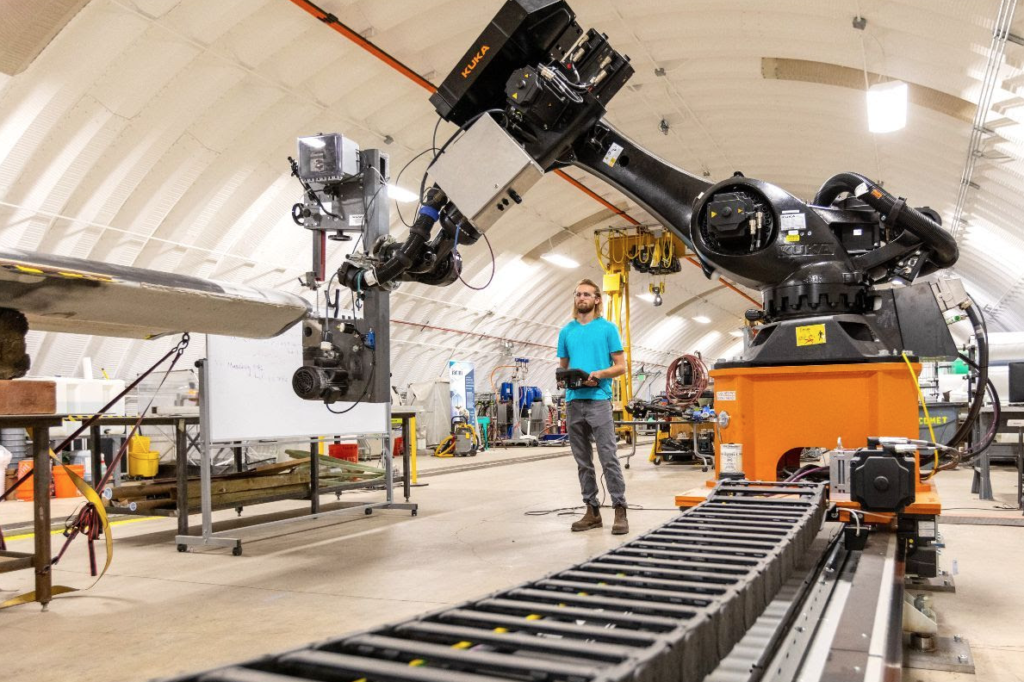Building Wind Turbines 5.0
Process automation has already timidly appeared in the world of wind turbines. Today the wind industry uses a series of pre-programmed machines to paint and polish the blades but overall the full potential is still not exploited. Increasing the level of automation in production processes is now new research by NREL, the National Renewable Energy Laboratory of the US Department of Energy. Here engineer Hunter Huth and colleagues have added a new level of robotic assistance to build wind turbines to improve human product and working conditions.
The study focuses on post-stamping operations, that is, after the realization of the two sides of the blade using molding and bonding of the parts. The next steps include finishing the parts to remove the remaining burrs, grinding to produce the desired airfoil shape, sanding, laminating and painting.
read also Offshore wind, the USA plans 12 auctions in 5 years
The benefits of more automated wind production
As turbines become larger and more powerful, these activities require workers to move on higher and higher scaffolding. In addition, all work must be done wearing Tyvek respirators and suits to protect them from composite dust. Conditions are not easy and today, especially in the USA, there is also a shortage of skilled labour.
But there are also other benefits available. At this level automation could reduce factory time and improve blade consistency. Robots can use larger tools and perform operations more efficiently than traditional manual tools.
The robotic arm of the NREL
In their project, NREL scientists proposed a process to automate three post-moulding operations: trimming, grinding and sanding. The work started with a series of scans to create a 3D representation of the position of the wind turbine blade, accurately identifying the front and rear sections of the wing profile. So the engineers programmed a robotic arm to do the above tasks. The algorithms created were tested on a 5 meter blade section and the results were analysed in terms of operating speed and accuracy. The conclusion? Building wind turbines with robots is not a perfect process yet. The researchers found, in fact, several improvements compared to manual work but also some failings, especially in the grinding phase to be optimized in the future.
“While it may not be obvious, automating some of the workforce in blade production can lead to more jobs in the United States because it improves the economy of domestic components than imported ones,” explains Daniel Laird, director of the National Wind Technology Center at NREL.
“The purpose of this research was to develop automation methods that could be used to make domestically produced blades globally competitive,” Huth added. “Offshore loaders are currently not manufactured in the United States due to high labor rates. The finishing process requires a lot of manpower and has a high turnover rate due to the hard nature of the work. By automating the finishing process, domestic offshore blade production can become more economically feasible”.

